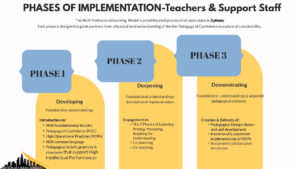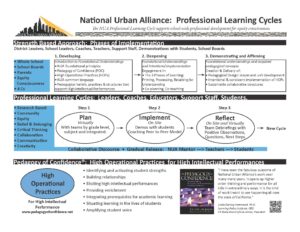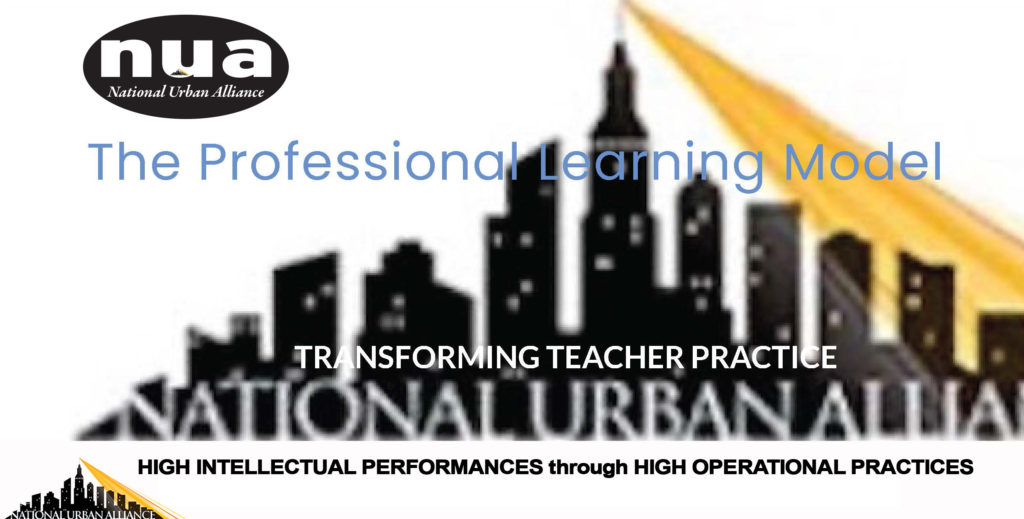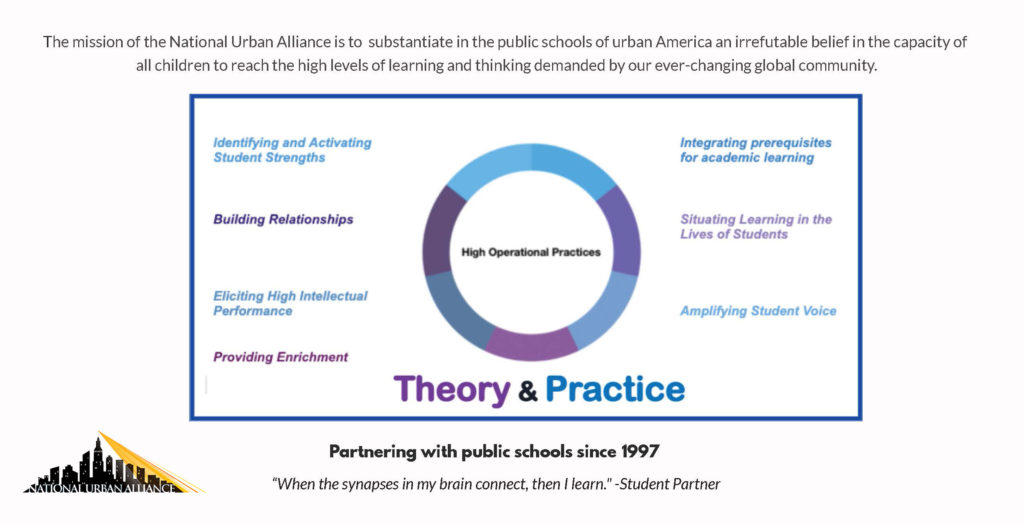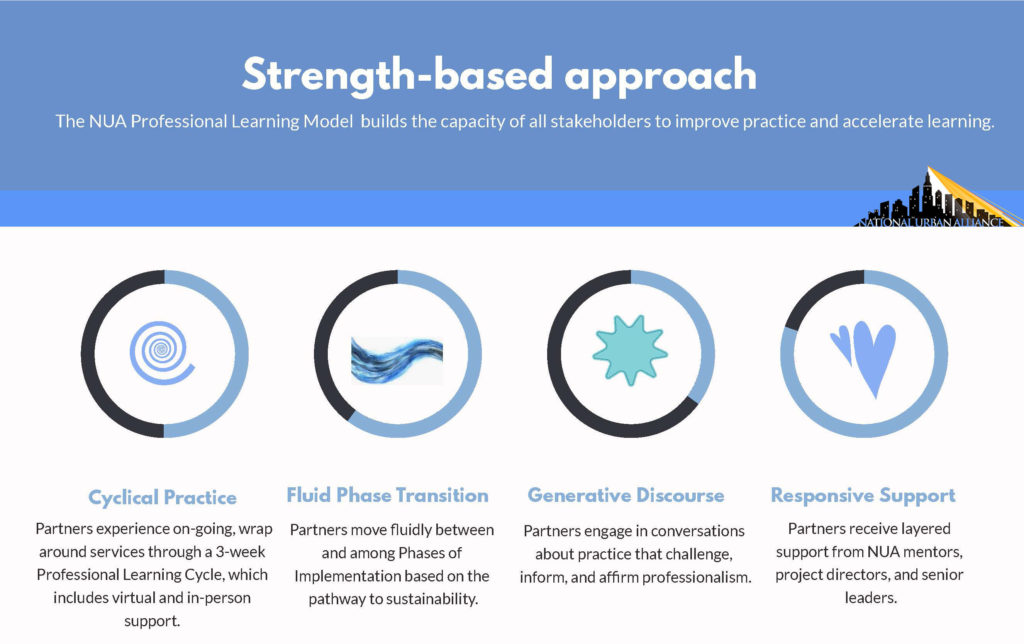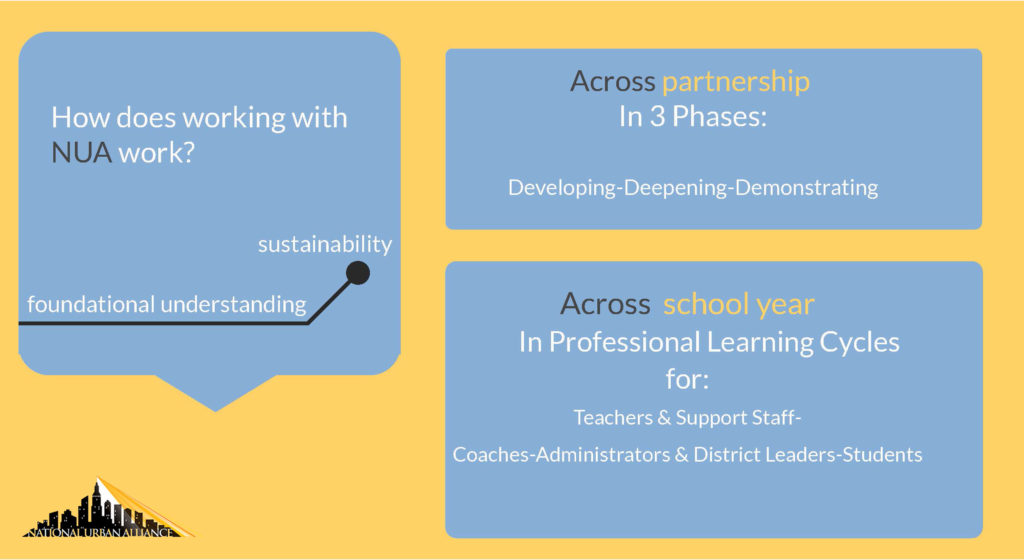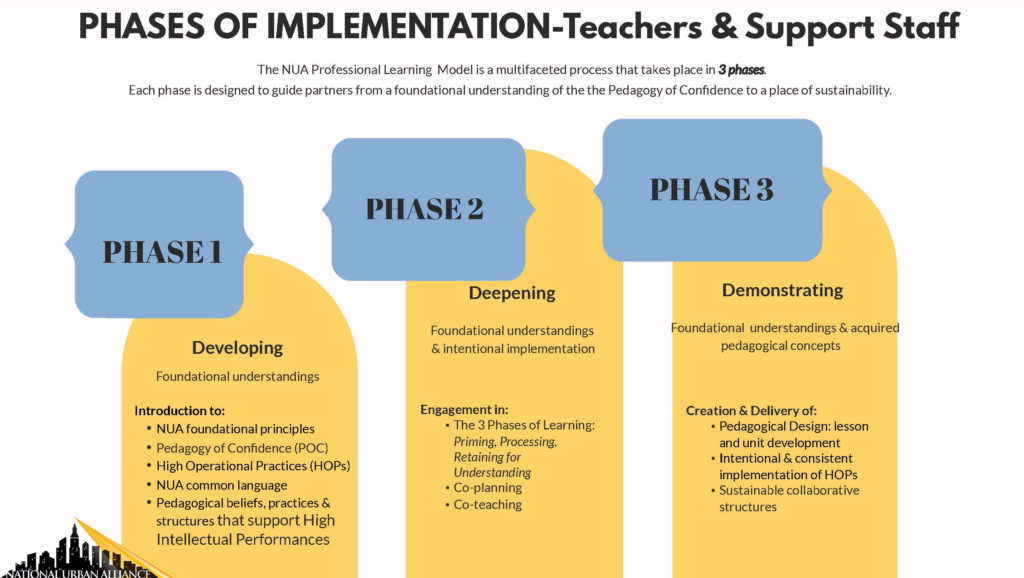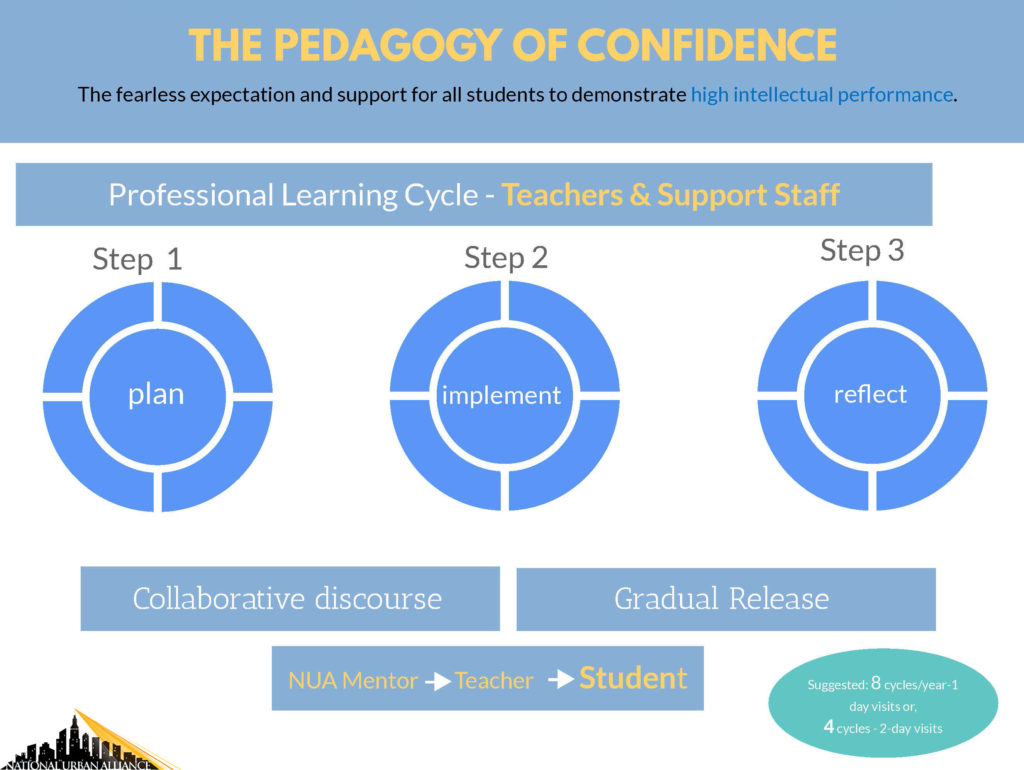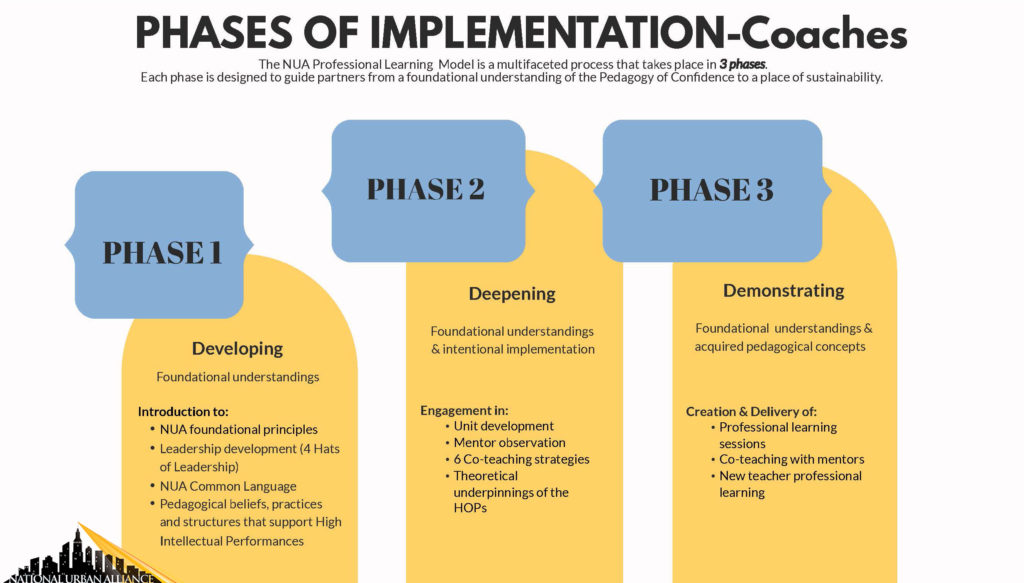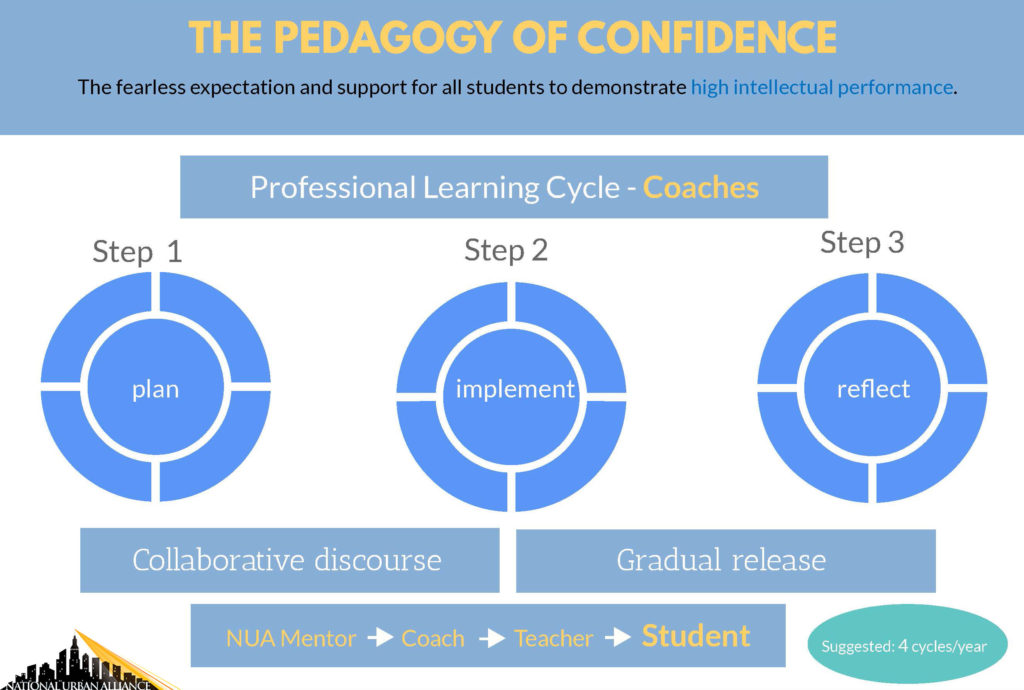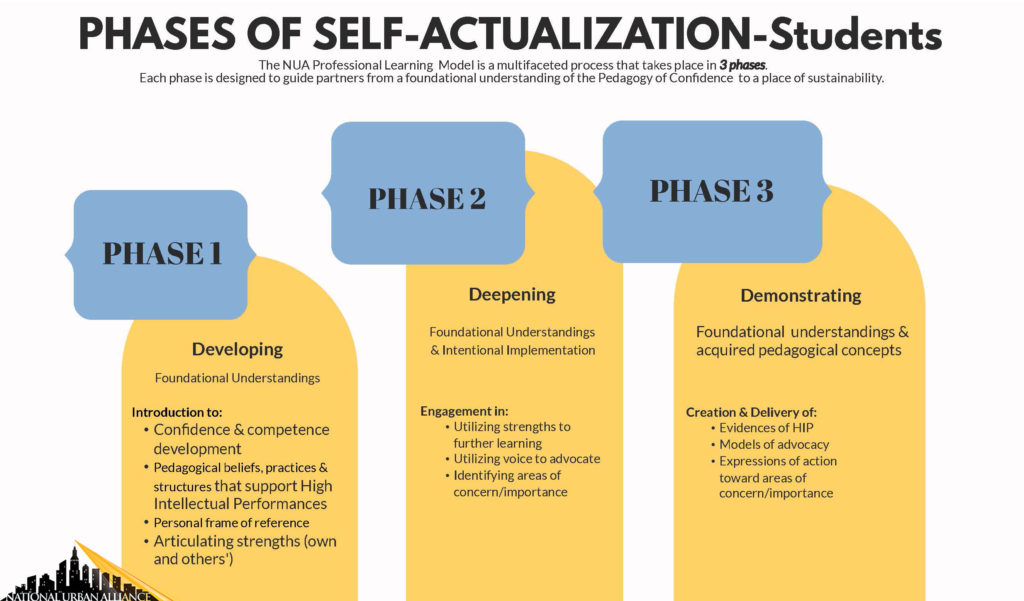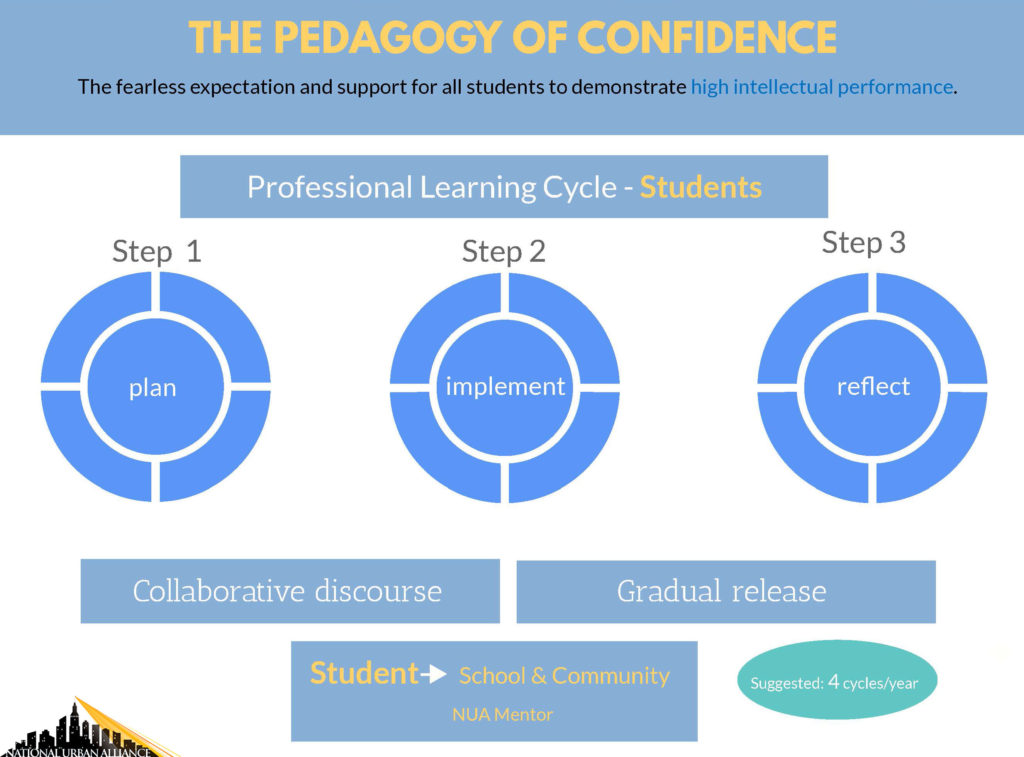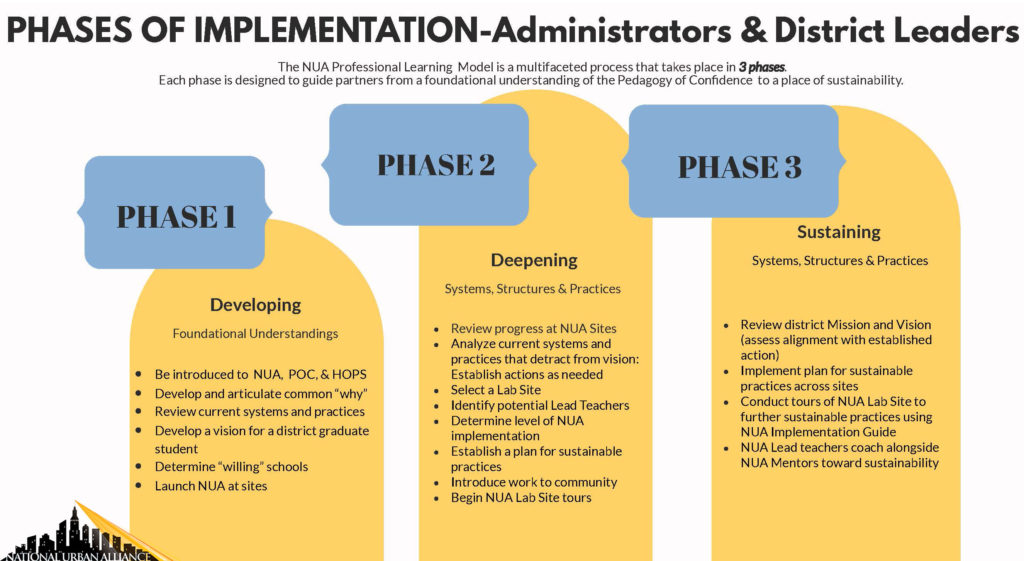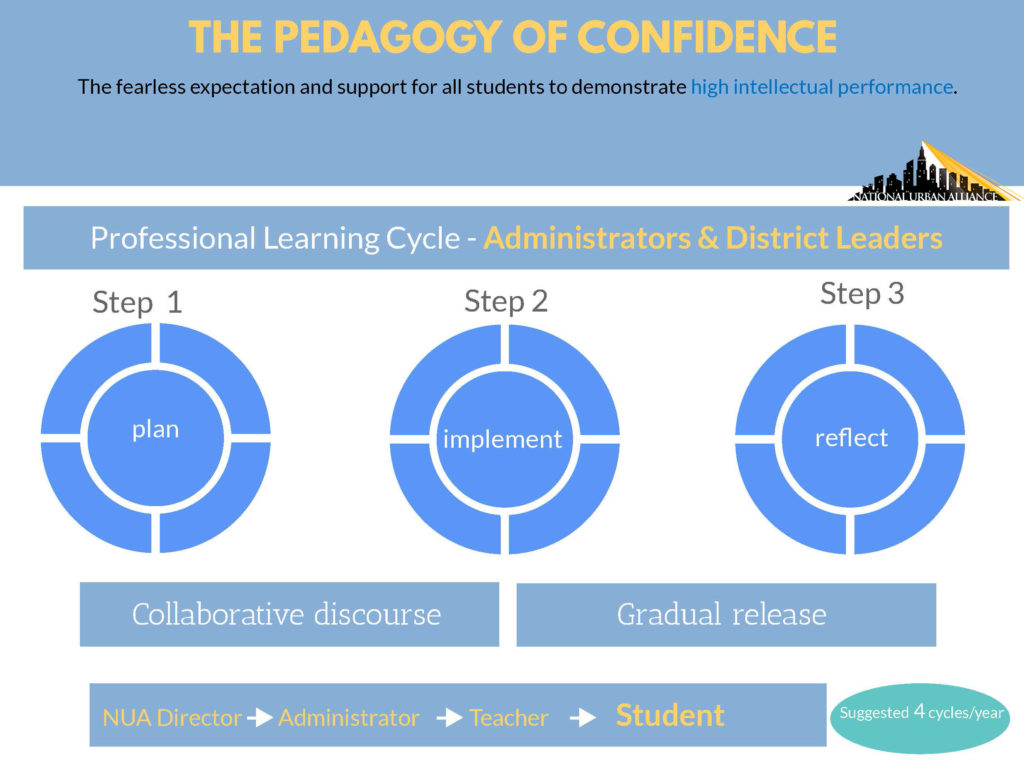National Urban Alliance
Professional Learning Model
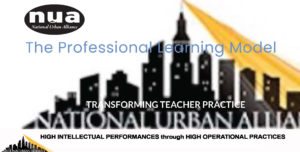 The National Urban Alliance (NUA) Professional Learning Model (PLM) is designed to transform underperforming schools into whole school success where all students demonstrate High Intellectual Performances (HIP) using High Operational Practices (HOP) with the Pedagogy of Confidence™.
The National Urban Alliance (NUA) Professional Learning Model (PLM) is designed to transform underperforming schools into whole school success where all students demonstrate High Intellectual Performances (HIP) using High Operational Practices (HOP) with the Pedagogy of Confidence™.
The National Urban Alliance partnership collaboration is defined by NUA’s steps of implementation. The 12 step overview of the NUA implementation model includes the educators, school leaders, coaches, district leaders, full staff and students.
The National Urban Alliance partnership is a practical, engaging, evidence-based program of professional learning, assessment tools, and capacity-building procedures for transformation and sustainability that enables schools to co-create curricula and instructional programs, collegially monitor their efforts, and continually rejuvenate their spirits to elicit high performances from students, teachers, and administrators.
Download the NUA Professional Model as shown below in a PDF file.
The NUA Professional Learning Model is a practical engaging, evidence-based program of professional learning, assessment tools, and capacity-building procedures for transformation and sustainability.
All students have an innate desire for engagement, challenge, developing strengths, belonging, and feeling valued. The Pedagogy of Confidence™ addresses this desire through its High Operational Practices (HOPs™) that guide culturally responsive pedagogy for equity.
.
The NUA Professional Learning Model supports partners as they progress through three phases: Developing, Deepening and Demonstrating. NUA partners move from a foundational understanding of the Pedagogy of Confidence to a place of sustainability.
Through Professional Learning Cycles designed specifically for each primary stakeholder group (teachers, coaches, students, and administrators), partners are engaged in a generative plan-implement-reflect process and equipped to continue working collaboratively to break barriers to student achievement.

